All Items
27,382 items
|
Title
|
Images
|
Item Comment
|
Prefix
|
Number
|
In set
|
Set
|
Set Comment
|
Type
|
Artist
|
Author
|
Size
|
Topics
|
Set Covers
|
Reference
| |
|---|---|---|---|---|---|---|---|---|---|---|---|---|---|---|---|
| 24941 |
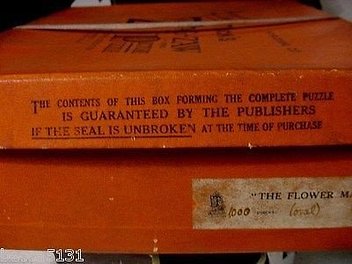
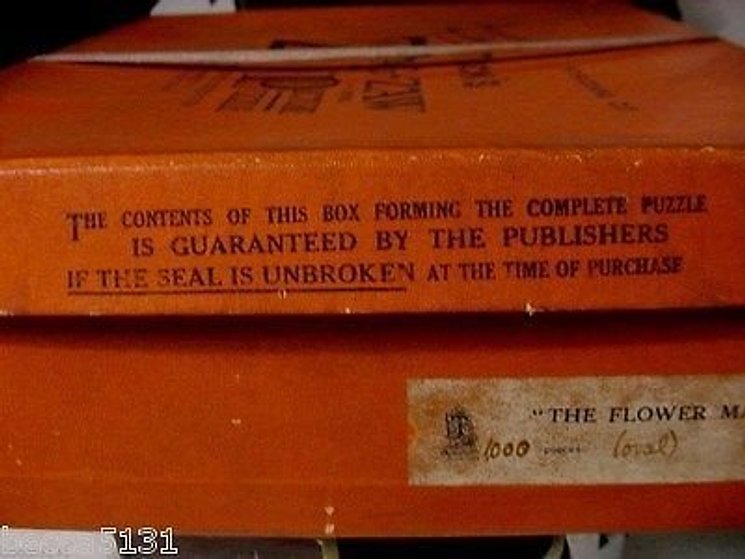
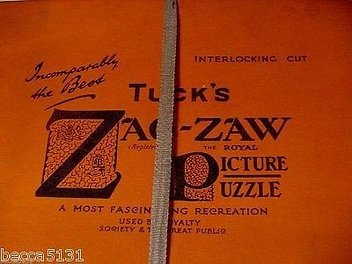



|
1000 pieces, oval as writtten on the label, box is sealed and has never been opened so not sure if oval in shape or rectangular
|
|
|
|
Zag-Zaw line of puzzles was first produced in 1909, all incorporate figurals or whimsies, sold in red or orange boxes with labels on the side or bottom of the box, most without guide pictures. Initially cut non-interlocking but by 1930's became more so. Puzzles have a different cuts so that the same image will come in several versions which means that missing pieces can not be taken from other puzzles with the same image. See also Bob Armstrong's website on old jigsaw puzzles
|
|
|
|
|
|
| |||
| 24942 |
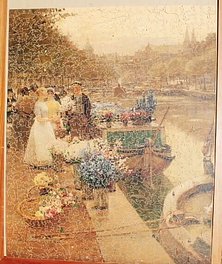



|
1050 pieces with 96 whimsies, one replacement piece
|
|
|
|
Zag-Zaw line of puzzles was first produced in 1909, all incorporate figurals or whimsies, sold in red or orange boxes with labels on the side or bottom of the box, most without guide pictures. Initially cut non-interlocking but by 1930's became more so. Puzzles have a different cuts so that the same image will come in several versions which means that missing pieces can not be taken from other puzzles with the same image. See also Bob Armstrong's website on old jigsaw puzzles
|
|
|
21 x 26 in.
|
|
|
| |||
| 24943 |




|
1300 pieces, push fit jigsaw puzzle.
|
|
|
|
Zag-Zaw line of puzzles was first produced in 1909, all incorporate figurals or whimsies, sold in red or orange boxes with labels on the side or bottom of the box, most without guide pictures. Initially cut non-interlocking but by 1930's became more so. Puzzles have a different cuts so that the same image will come in several versions which means that missing pieces can not be taken from other puzzles with the same image. See also Bob Armstrong's website on old jigsaw puzzles
|
|
|
40 x 24 in
|
|
|
| |||
| 24944 |

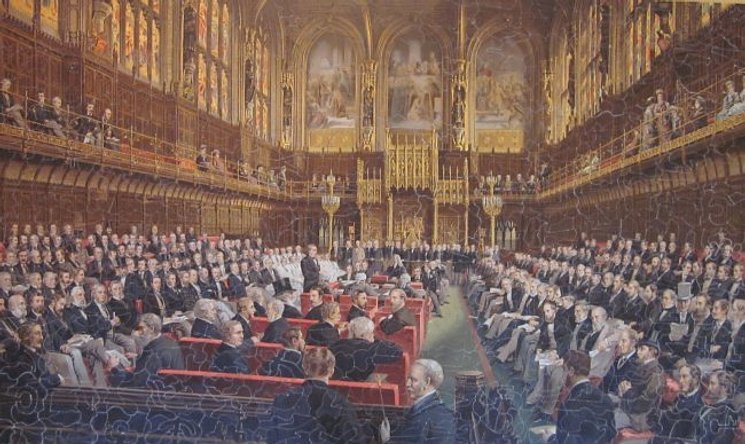
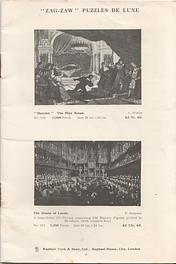
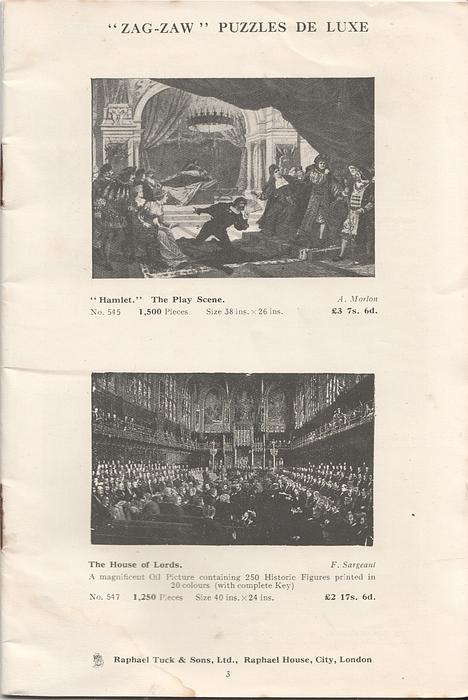
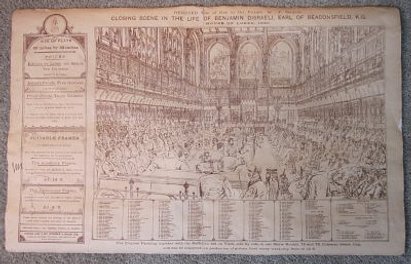


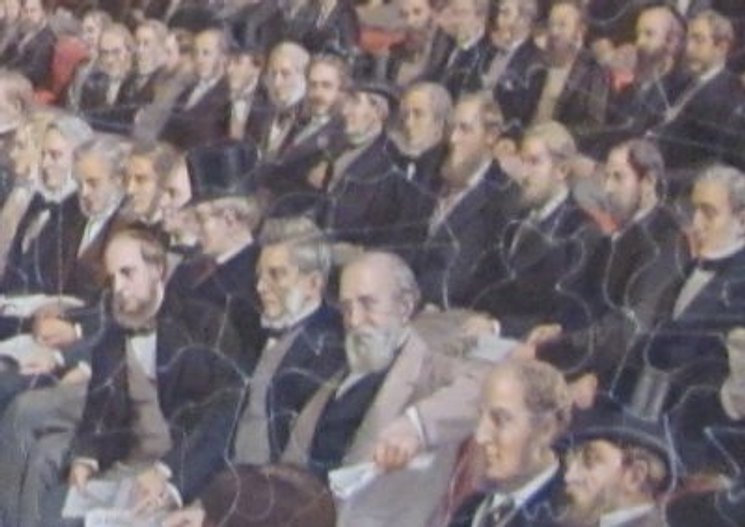


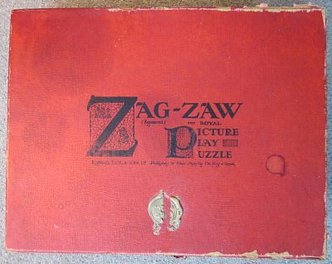
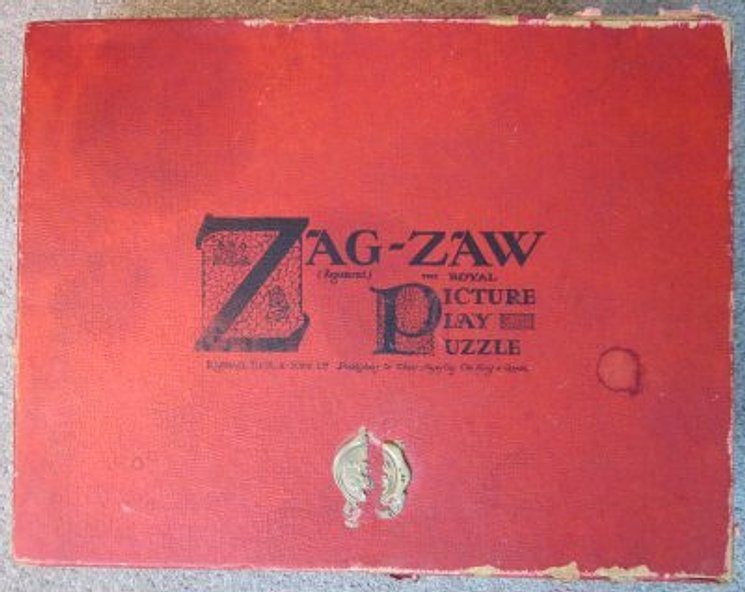
|
1250 pieces, 180 figurals (approx.) Listed in the catalogs as a puzzle DE LUXE, depicts Benjamin Disraeli's last speech in the House of Lords in 1880, has accompanying black and white drawing which show the names of the audience and their location in the painting, F. Sargent painted this celebrated historical picture called "Closing Scene in the Life of Benjamin Disraeli, Earl of Beaconsfield, K.G." in the House of Lords 1880. listed in two Tuck catalogs
|
|
|
|
Zag-Zaw line of puzzles was first produced in 1909, all incorporate figurals or whimsies, sold in red or orange boxes with labels on the side or bottom of the box, most without guide pictures. Initially cut non-interlocking but by 1930's became more so. Puzzles have a different cuts so that the same image will come in several versions which means that missing pieces can not be taken from other puzzles with the same image. See also Bob Armstrong's website on old jigsaw puzzles
|
F. SARGENT
|
|
39 x 24 in.
|
|
|
| |||
| 24945 |
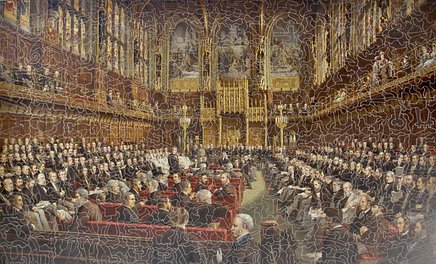
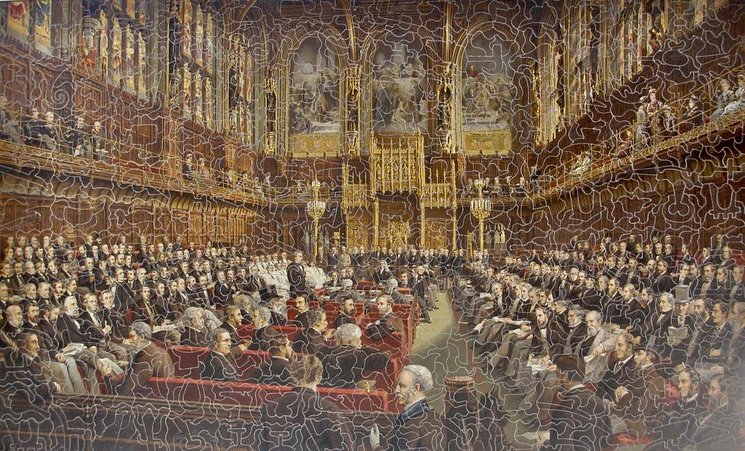

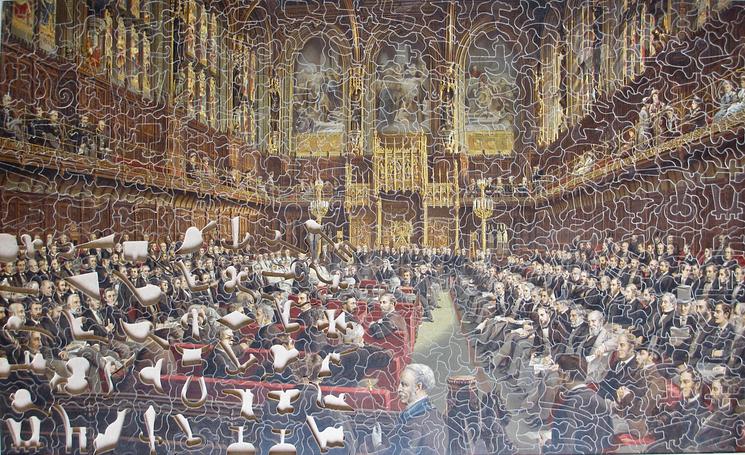







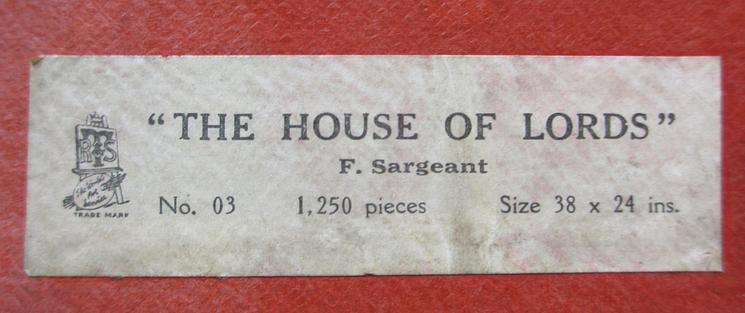
|
1250 pieces, including 168 whimsies. Cut in wood in a pushfit style. Complete with thirteen excellent replacement pieces, boxed and labelled. Depicts Benjamin Disraeli's last speech in the House of Lords in 1880 Missing the usually accompanying black and white drawing which show the names of the audience and their location in the painting, Puzzle information and photos from his collection posted by Grenville Oliver.
|
|
|
|
Zag-Zaw line of puzzles was first produced in 1909, all incorporate figurals or whimsies, sold in red or orange boxes with labels on the side or bottom of the box, most without guide pictures. Initially cut non-interlocking but by 1930's became more so. Puzzles have a different cuts so that the same image will come in several versions which means that missing pieces can not be taken from other puzzles with the same image. See also Bob Armstrong's website on old jigsaw puzzles
|
F. SARGENT
|
|
39 x 24 in.
|
|
|
| |||
| 24946 |
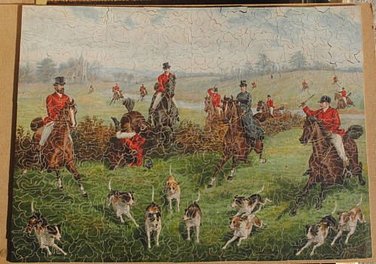


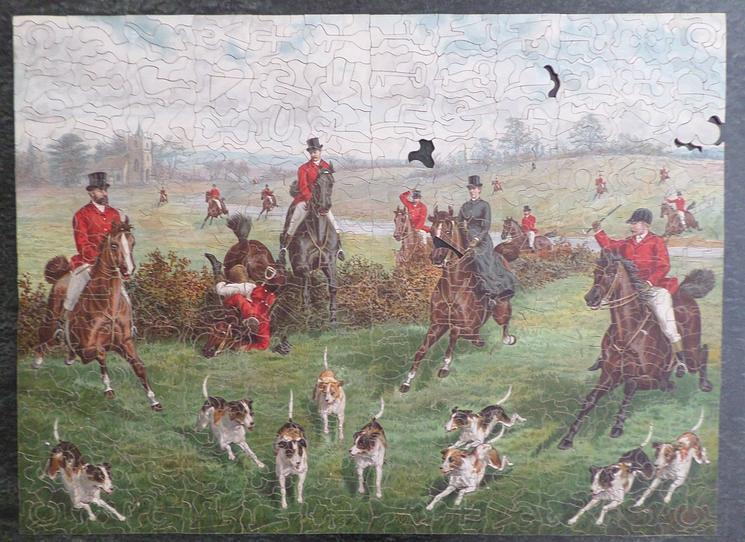
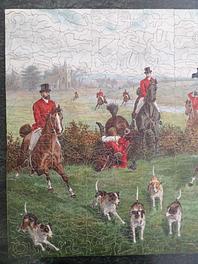


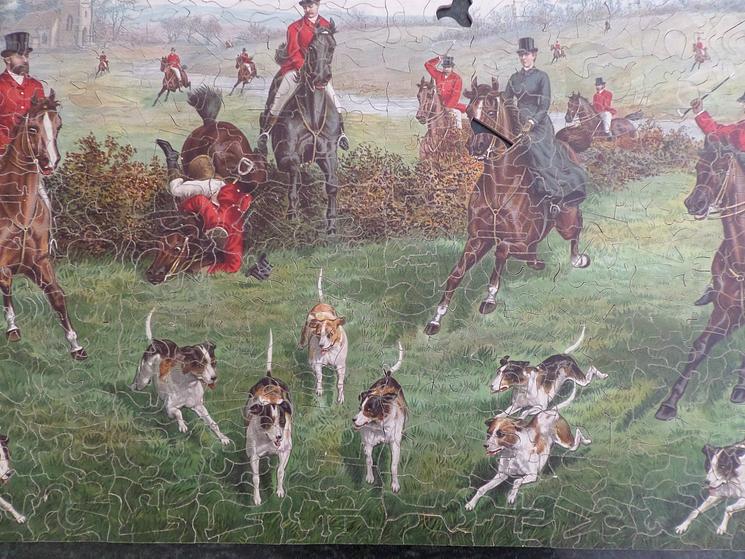




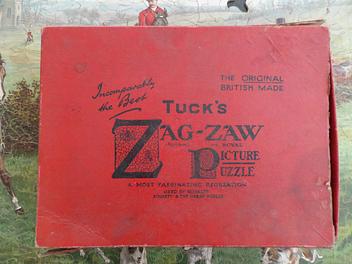
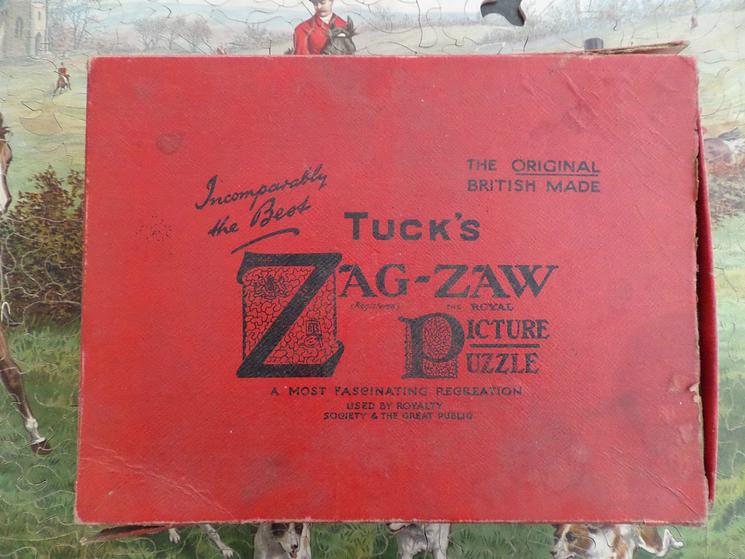


|
1000 pieces with five pieces missing, completed image shown here has one replacement piece
|
|
|
|
Zag-Zaw line of puzzles was first produced in 1909, all incorporate figurals or whimsies, sold in red or orange boxes with labels on the side or bottom of the box, most without guide pictures. Initially cut non-interlocking but by 1930's became more so. Puzzles have a different cuts so that the same image will come in several versions which means that missing pieces can not be taken from other puzzles with the same image. See also Bob Armstrong's website on old jigsaw puzzles
|
W.H. HUNT
|
|
31 x 23 in.
|
|
|
| |||
| 24947 |

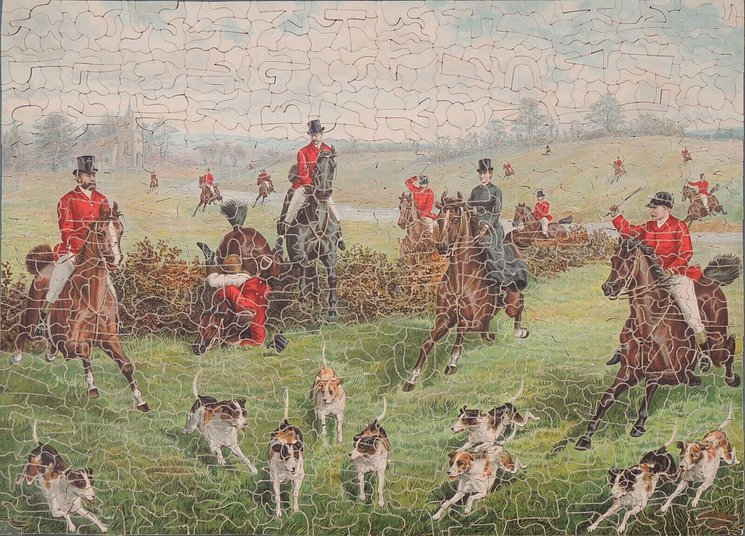





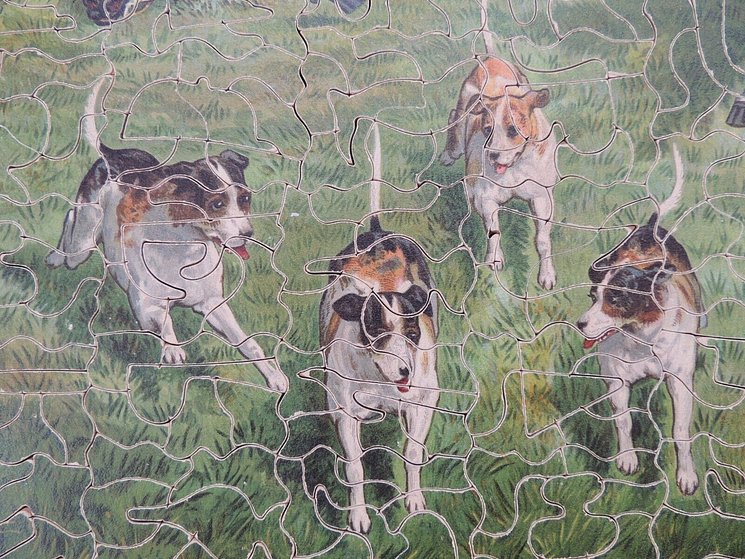


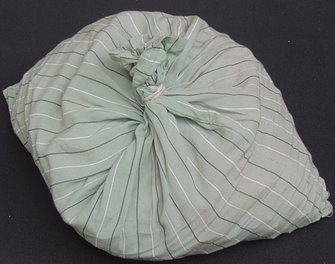
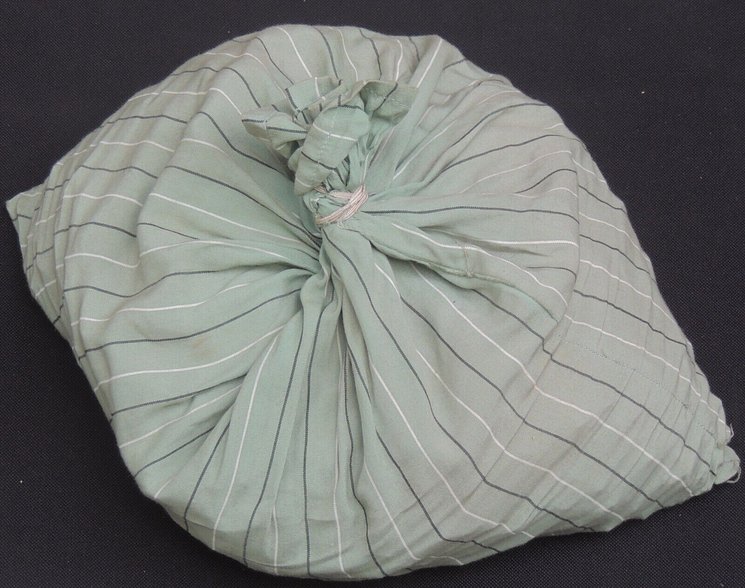
|
1000 pieces with one piece replaced, chew marks to two pieces, and a few missing nibs or paint color missing, no box, push fit style, listed and described in the catalogs, comes in a cloth bag and not a Tuck box
|
|
|
|
Zag-Zaw line of puzzles was first produced in 1909, all incorporate figurals or whimsies, sold in red or orange boxes with labels on the side or bottom of the box, most without guide pictures. Initially cut non-interlocking but by 1930's became more so. Puzzles have a different cuts so that the same image will come in several versions which means that missing pieces can not be taken from other puzzles with the same image. See also Bob Armstrong's website on old jigsaw puzzles
|
W.H. HUNT
|
|
31 x 23 in.
|
|
| ||||
| 24948 |

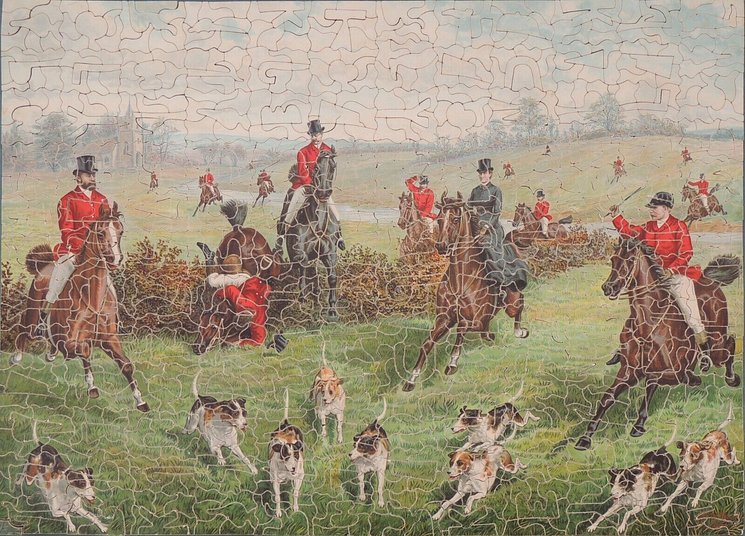

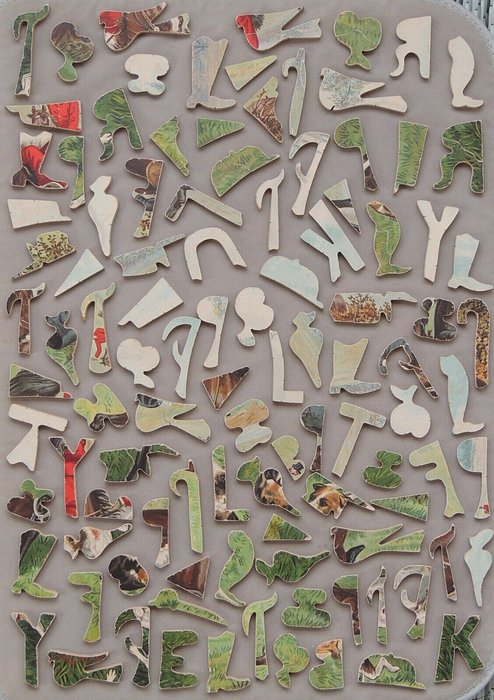


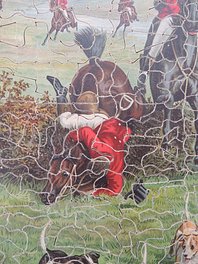
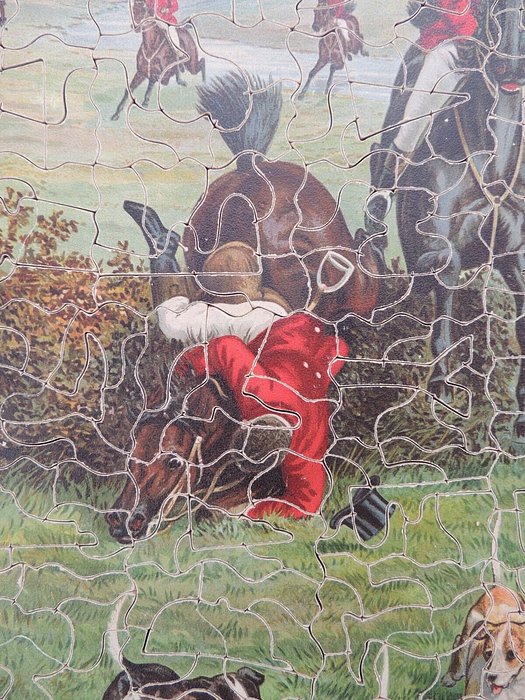
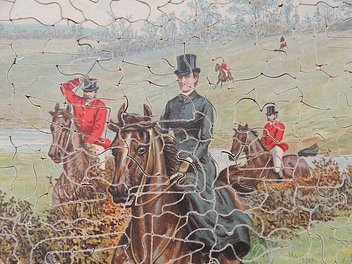
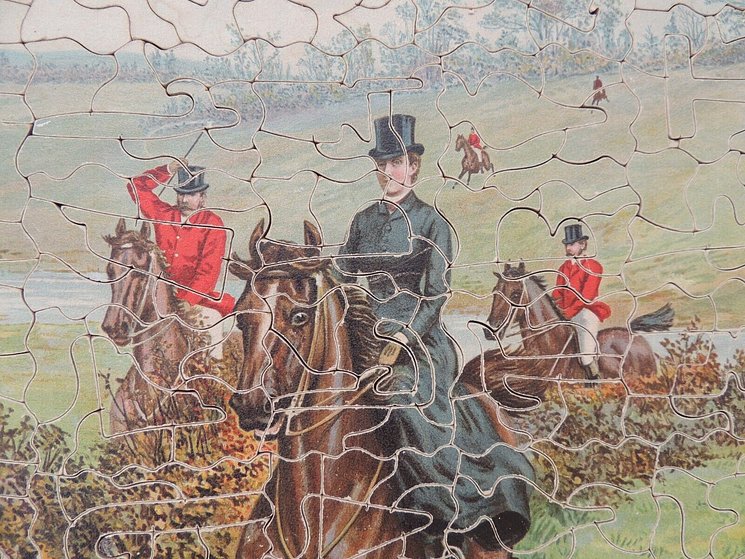


|
1000 pieces, wooden, figurals, complete with one replacement piece, two that have been a bit chewed and some damaged nibs, no box but in a cloth bag, listed and described in the catalogs
|
|
|
|
Zag-Zaw line of puzzles was first produced in 1909, all incorporate figurals or whimsies, sold in red or orange boxes with labels on the side or bottom of the box, most without guide pictures. Initially cut non-interlocking but by 1930's became more so. Puzzles have a different cuts so that the same image will come in several versions which means that missing pieces can not be taken from other puzzles with the same image. See also Bob Armstrong's website on old jigsaw puzzles
|
W.H. HUNT
|
|
31 x 23 in.
|
|
|
| |||
| 24949 |
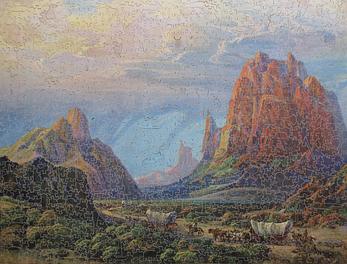

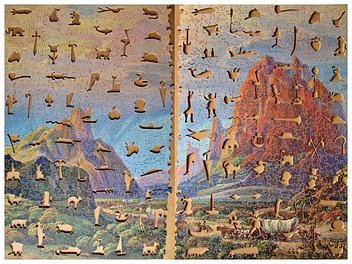
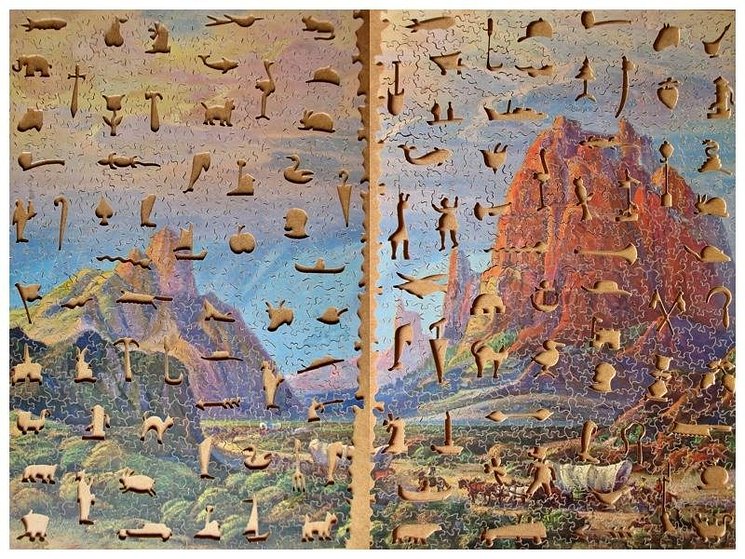

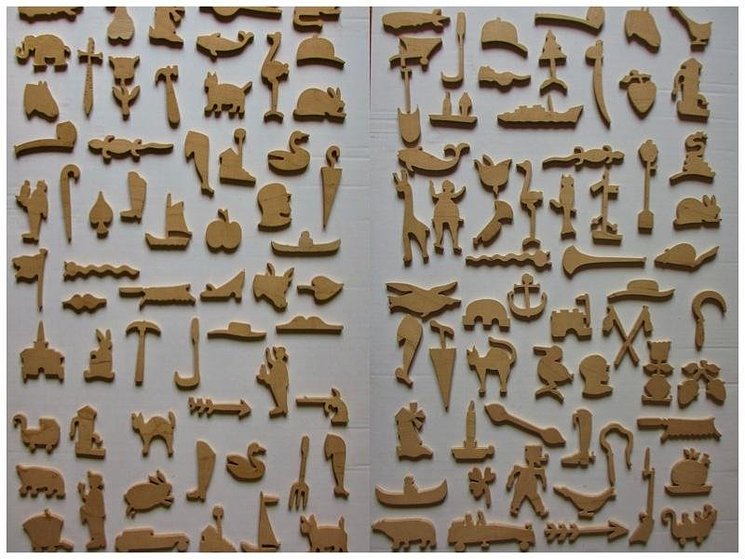
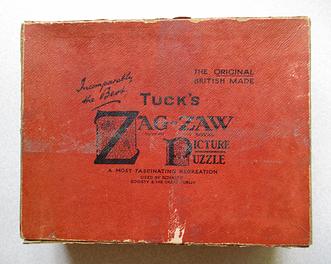



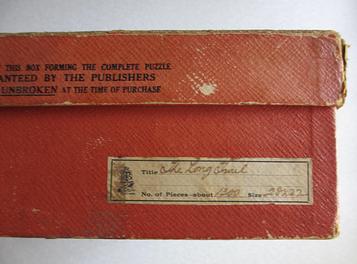


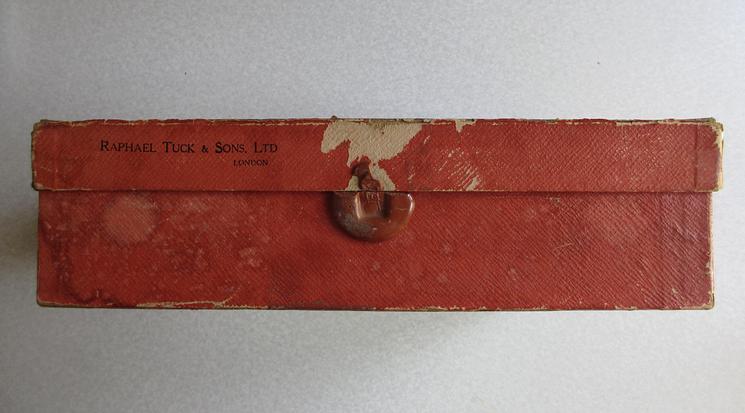
|
1300 pieces, including about 120 whimsies. Cut in wood in an interlocking style. Complete with 25 replacement piece, boxed and labelled. Puzzle information and photos from his collection posted by Grenville Oliver.
|
|
|
|
Zag-Zaw line of puzzles was first produced in 1909, all incorporate figurals or whimsies, sold in red or orange boxes with labels on the side or bottom of the box, most without guide pictures. Initially cut non-interlocking but by 1930's became more so. Puzzles have a different cuts so that the same image will come in several versions which means that missing pieces can not be taken from other puzzles with the same image. See also Bob Armstrong's website on old jigsaw puzzles
|
|
|
28 x 2 in
|
|
|
| |||
| 24950 |
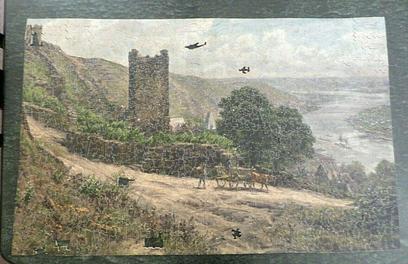

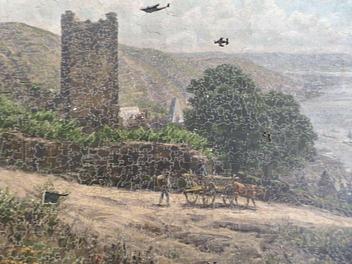
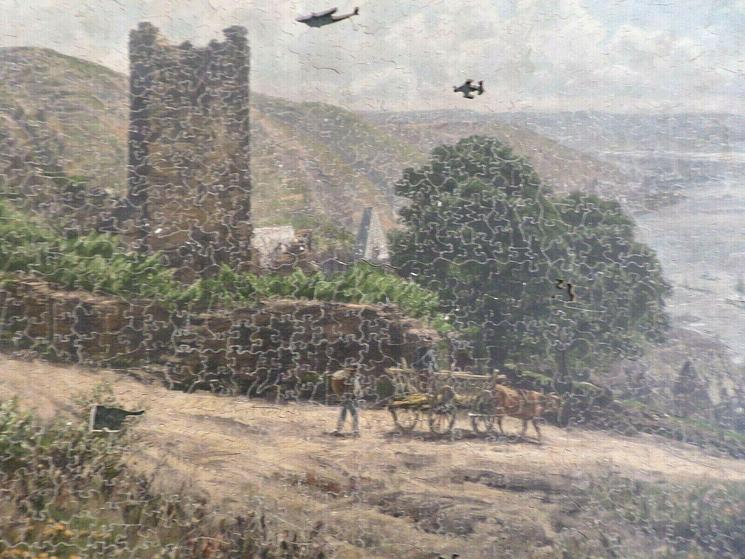


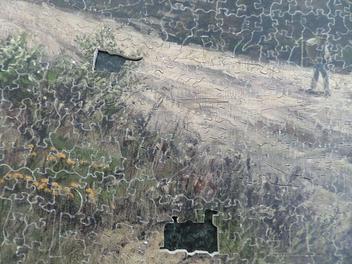
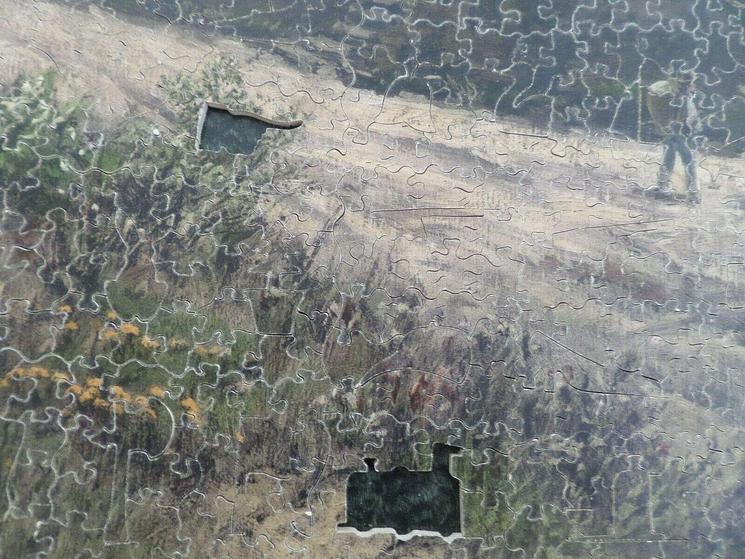


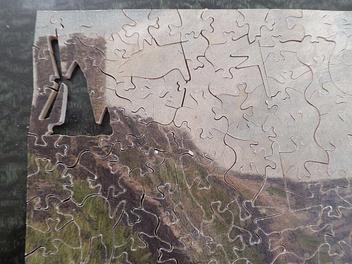

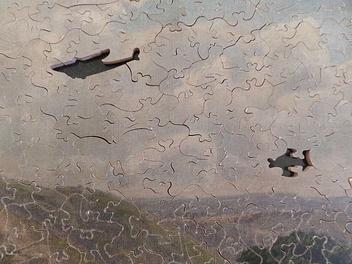

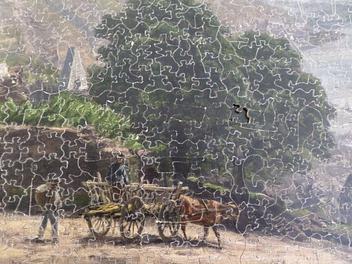
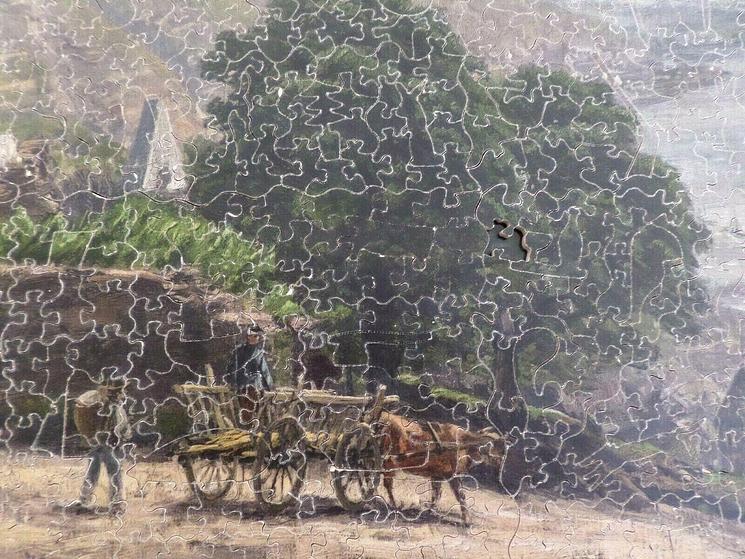

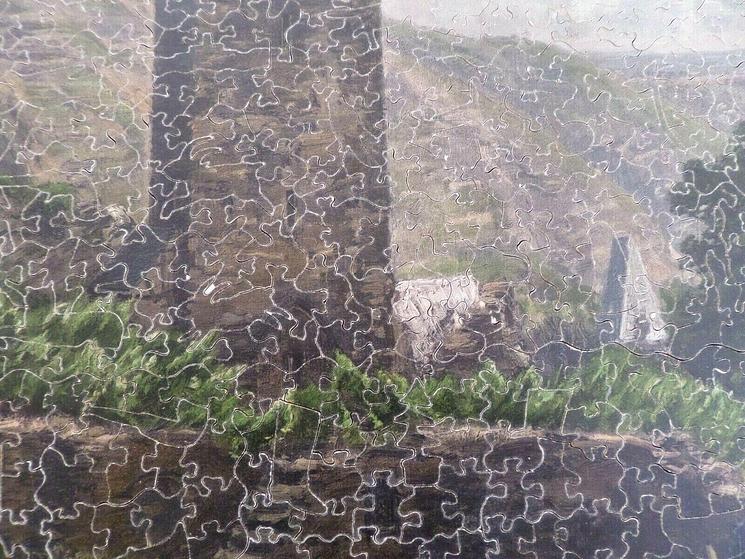
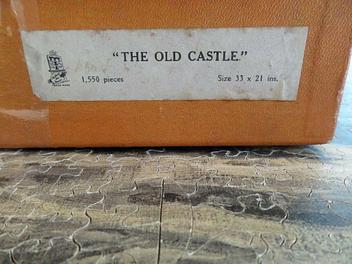
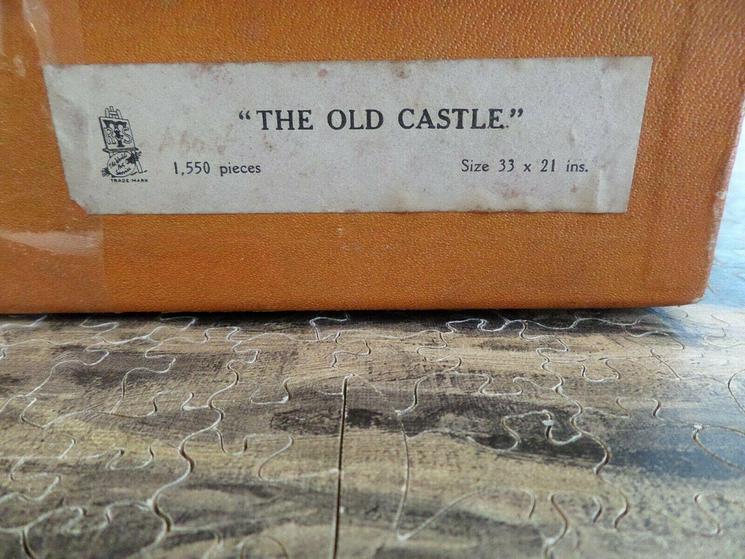

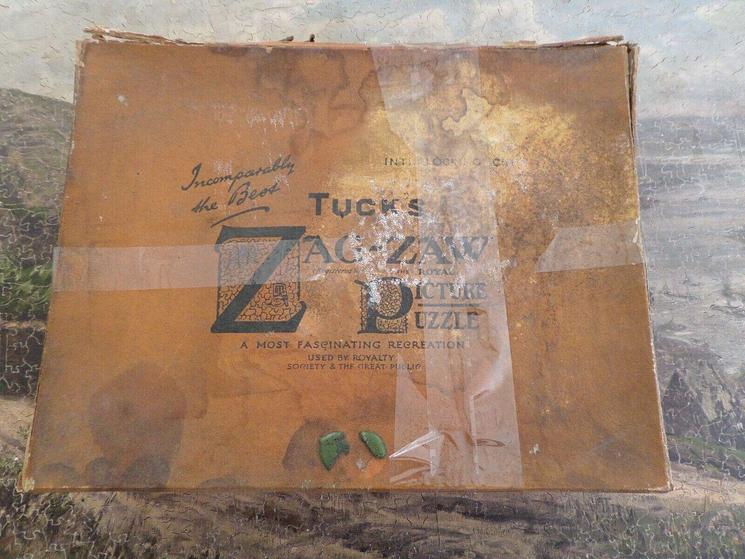
|
1550 pieces, wooden, figurals, with box, missing 10 original pieces,
|
|
|
|
Zag-Zaw line of puzzles was first produced in 1909, all incorporate figurals or whimsies, sold in red or orange boxes with labels on the side or bottom of the box, most without guide pictures. Initially cut non-interlocking but by 1930's became more so. Puzzles have a different cuts so that the same image will come in several versions which means that missing pieces can not be taken from other puzzles with the same image. See also Bob Armstrong's website on old jigsaw puzzles
|
|
|
33 x 21 in.
|
|
|
| |||
| 24951 |


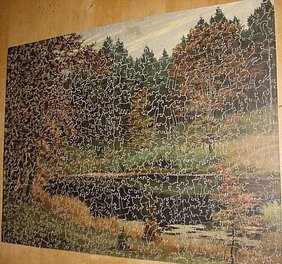
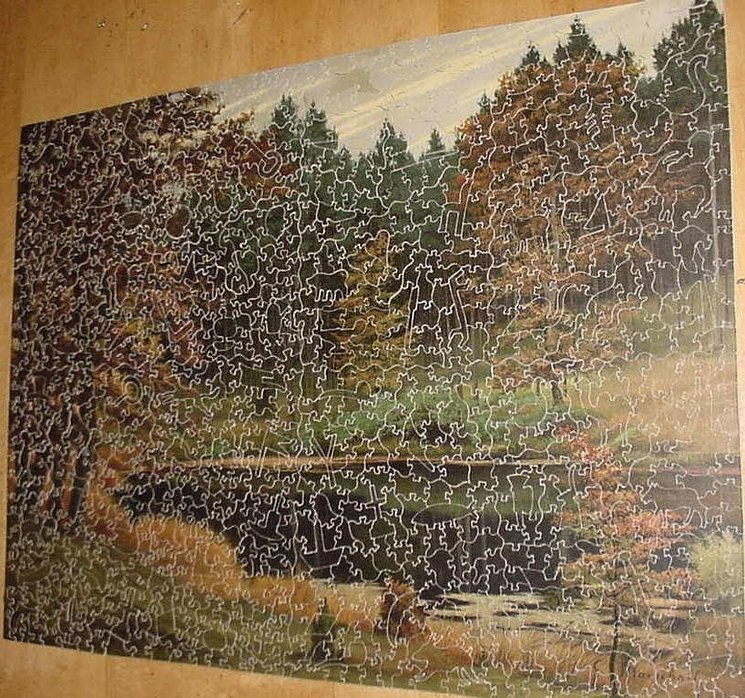



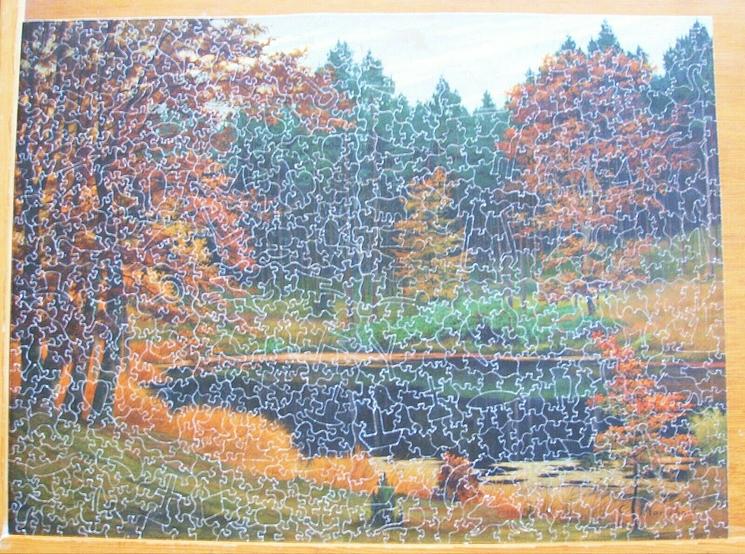
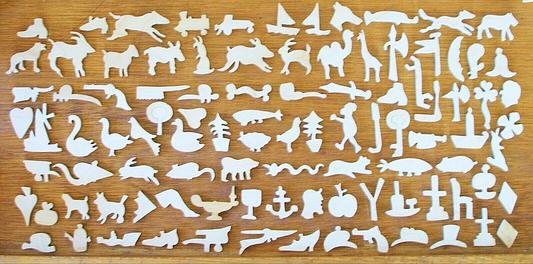

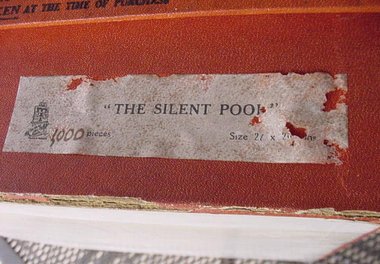
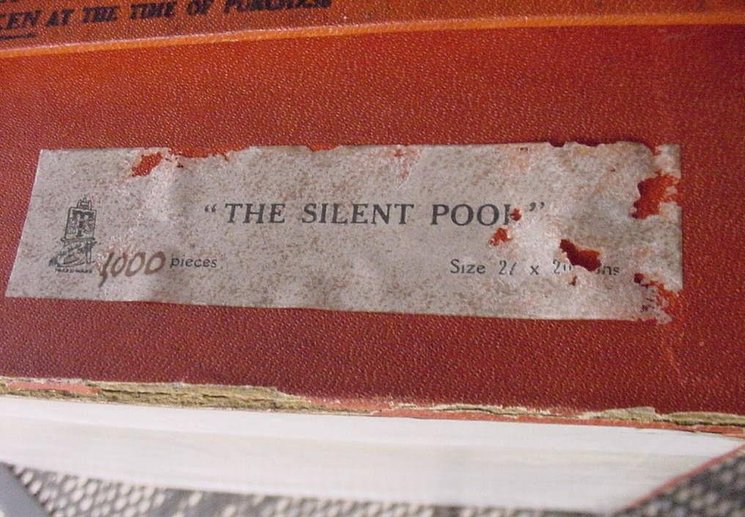

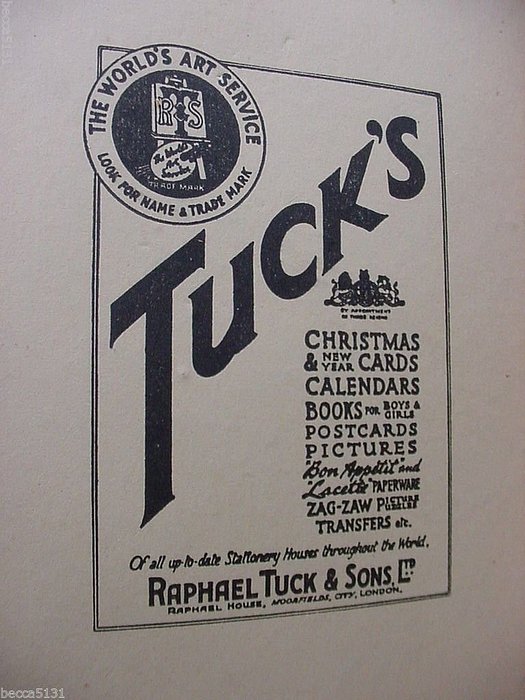

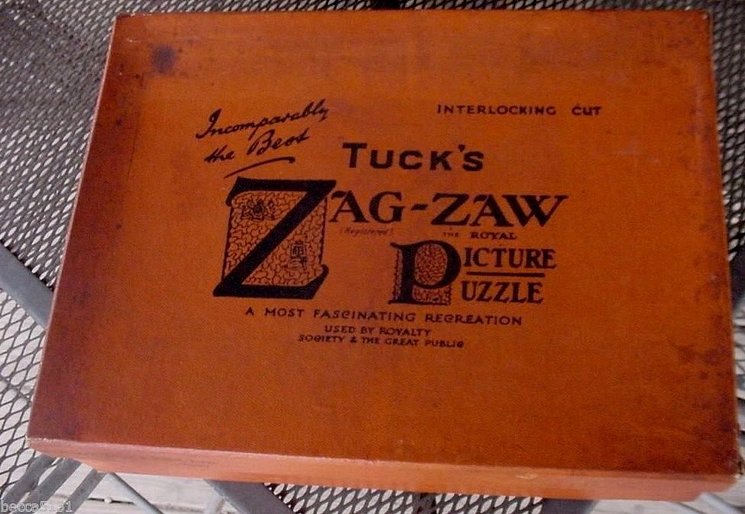
|
1000 pieces, many whimsies
|
|
|
|
Zag-Zaw line of puzzles was first produced in 1909, all incorporate figurals or whimsies, sold in red or orange boxes with labels on the side or bottom of the box, most without guide pictures. Initially cut non-interlocking but by 1930's became more so. Puzzles have a different cuts so that the same image will come in several versions which means that missing pieces can not be taken from other puzzles with the same image. See also Bob Armstrong's website on old jigsaw puzzles
|
C. MARSHALL or G. MARSHALL
|
|
27 x 20 in.
|
|
|
| |||
| 24952 |

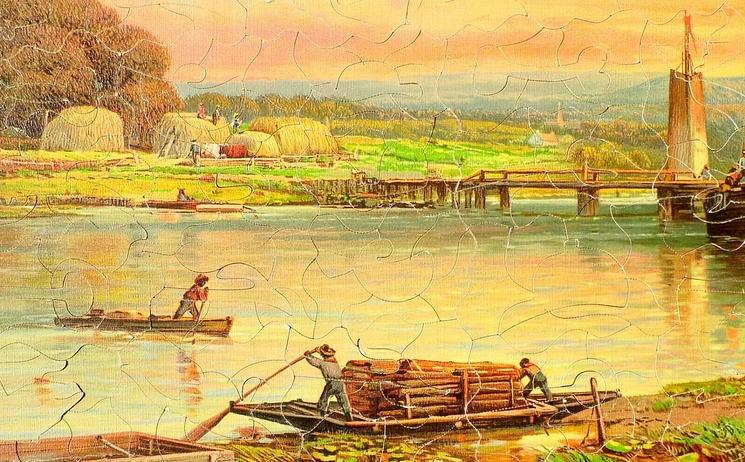




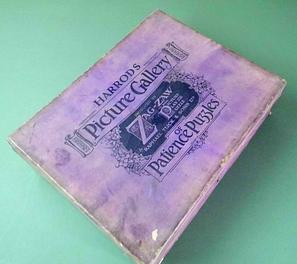
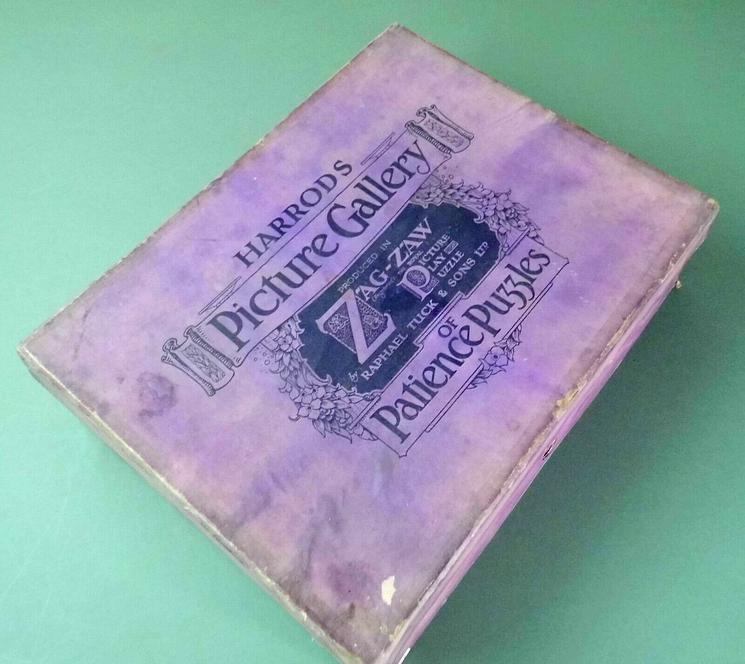
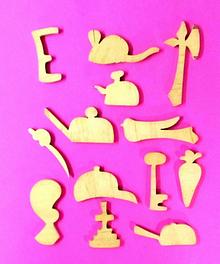
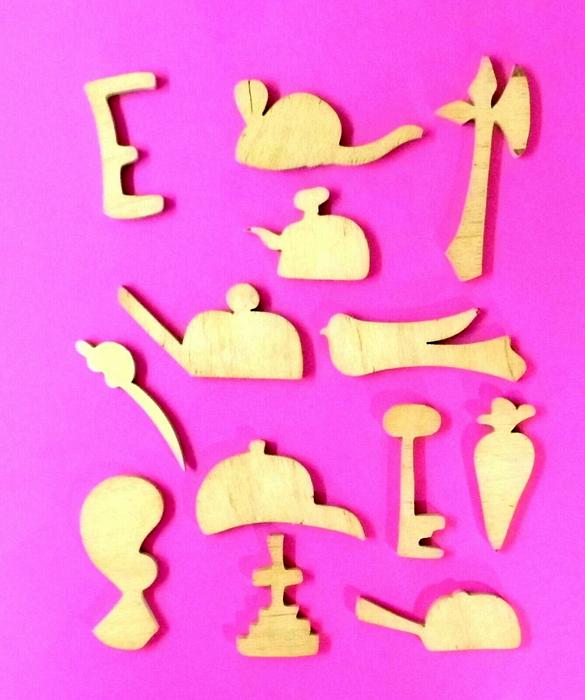
|
marketed by HARRODS OF LONDON under the brand HARRODS PICTURE GALLERY OF PATIENCE PUZZLES, 1100 pieces and many whimsies, circa 1920's, also comes as a regular Zag-Zaw titled EVENING ON THE VALLEY OF THE SHENANDOAH
|
|
|
|
Zag-Zaw line of puzzles was first produced in 1909, all incorporate figurals or whimsies, sold in red or orange boxes with labels on the side or bottom of the box, most without guide pictures. Initially cut non-interlocking but by 1930's became more so. Puzzles have a different cuts so that the same image will come in several versions which means that missing pieces can not be taken from other puzzles with the same image. See also Bob Armstrong's website on old jigsaw puzzles
|
ANDREW MELROSE
|
|
90 x 54 cm
|
|
|
| |||
| 24953 |
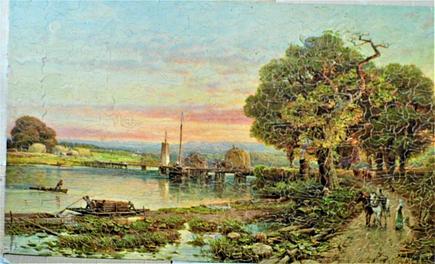


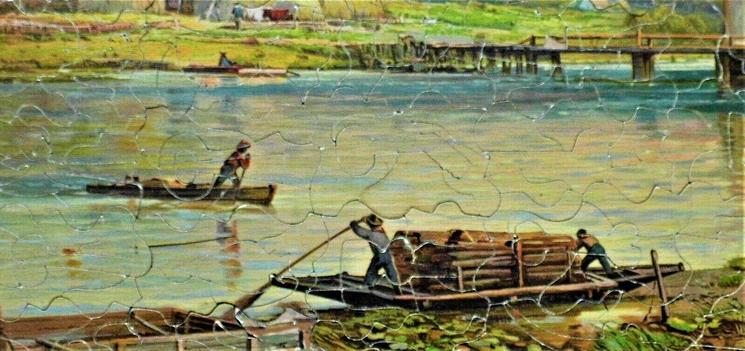


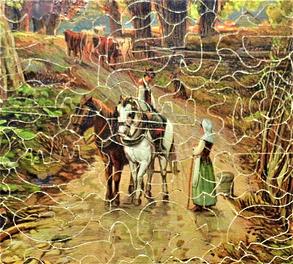


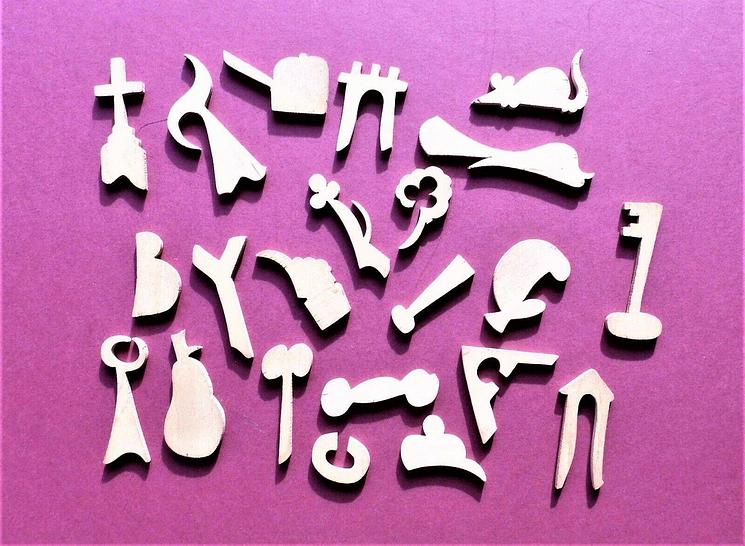
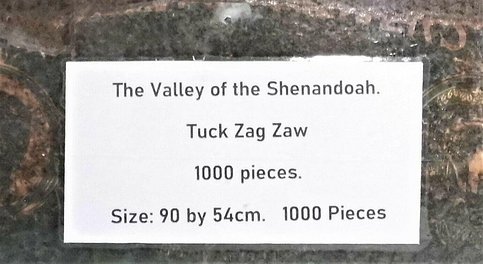

|
1000 PIECES, wooden, figurals, complete with four replacement pieces,
|
|
|
|
Zag-Zaw line of puzzles was first produced in 1909, all incorporate figurals or whimsies, sold in red or orange boxes with labels on the side or bottom of the box, most without guide pictures. Initially cut non-interlocking but by 1930's became more so. Puzzles have a different cuts so that the same image will come in several versions which means that missing pieces can not be taken from other puzzles with the same image. See also Bob Armstrong's website on old jigsaw puzzles
|
ANDREW MELSROSE
|
|
54 cm x 90 cm
|
|
|
| |||
| 24954 |






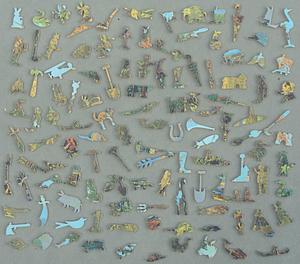


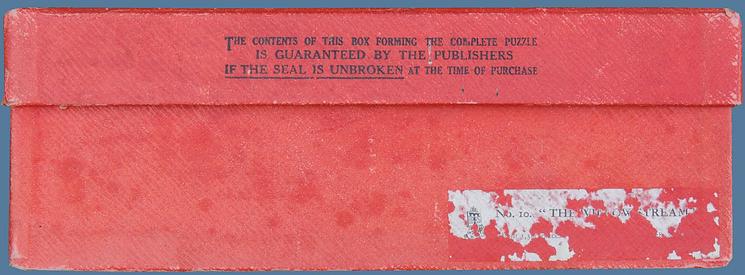
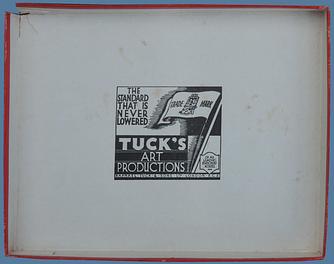

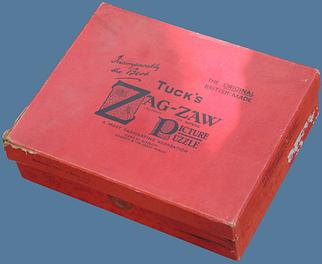
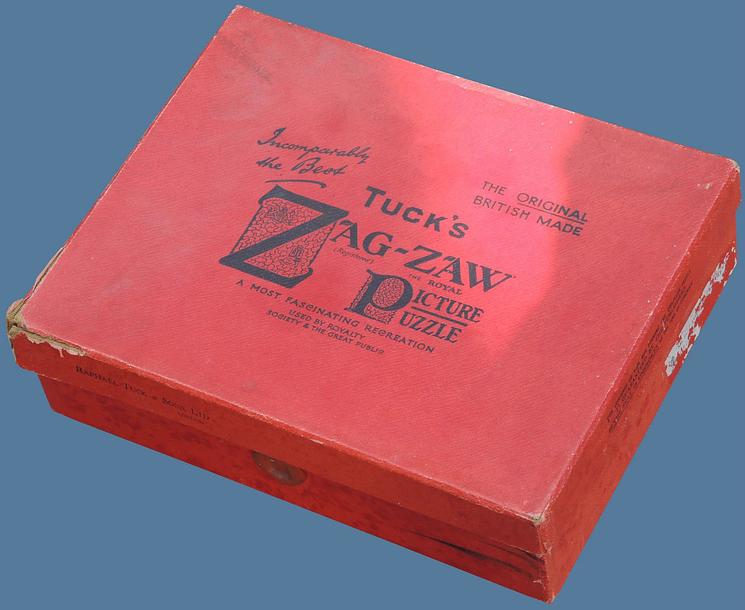
|
1300 pieces, 120 whimsies, circa 1930's
|
|
|
|
Zag-Zaw line of puzzles was first produced in 1909, all incorporate figurals or whimsies, sold in red or orange boxes with labels on the side or bottom of the box, most without guide pictures. Initially cut non-interlocking but by 1930's became more so. Puzzles have a different cuts so that the same image will come in several versions which means that missing pieces can not be taken from other puzzles with the same image. See also Bob Armstrong's website on old jigsaw puzzles
|
|
|
27.5 x 21 in.
|
|
|
| |||
| 24955 |


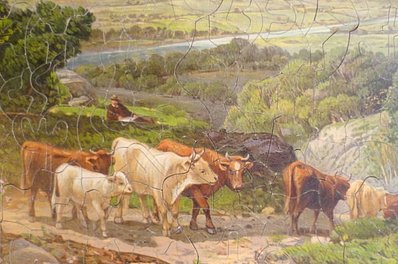




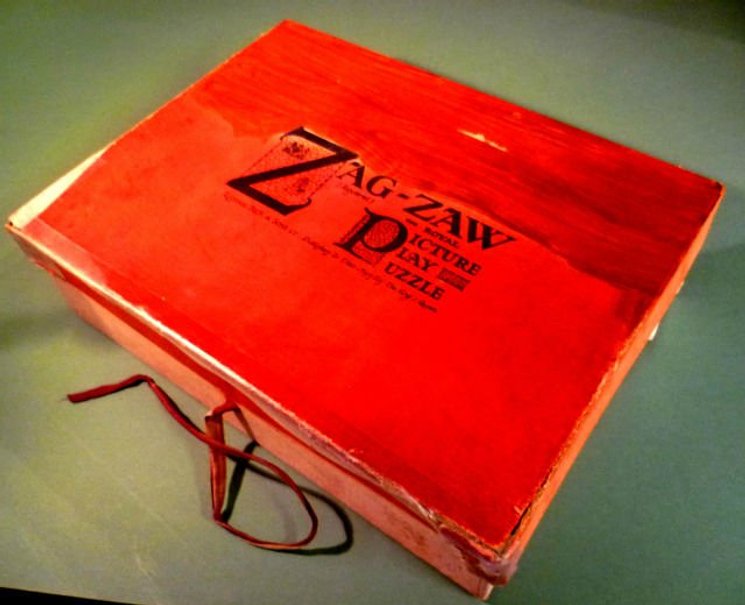


|
1000 pieces
|
|
|
|
Zag-Zaw line of puzzles was first produced in 1909, all incorporate figurals or whimsies, sold in red or orange boxes with labels on the side or bottom of the box, most without guide pictures. Initially cut non-interlocking but by 1930's became more so. Puzzles have a different cuts so that the same image will come in several versions which means that missing pieces can not be taken from other puzzles with the same image. See also Bob Armstrong's website on old jigsaw puzzles
|
ANDREW MELROSE
|
|
35 x 20 in.
|
|
|
| |||
| 24956 |


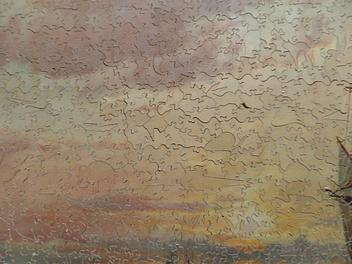
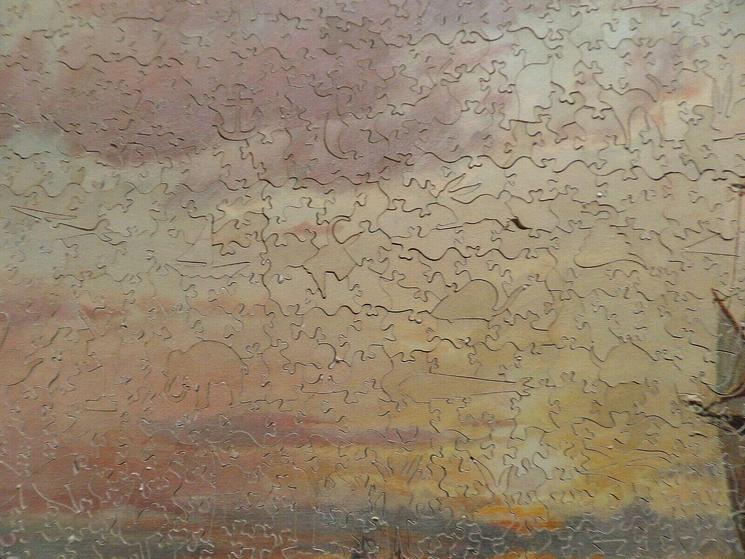

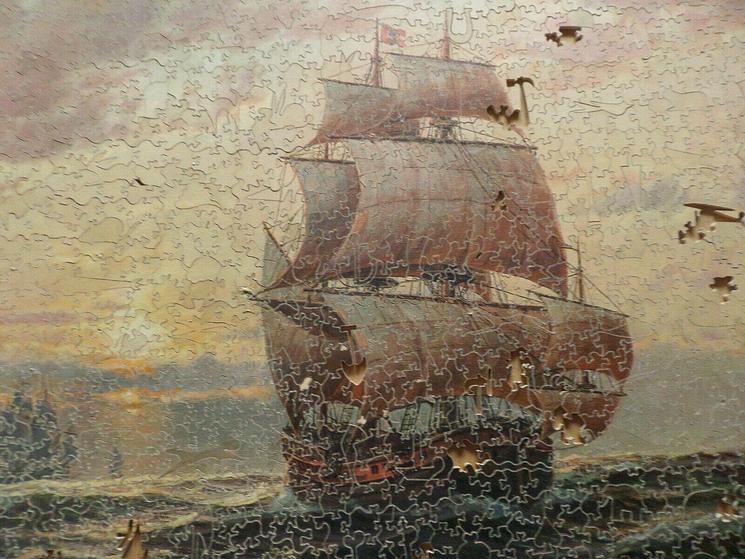
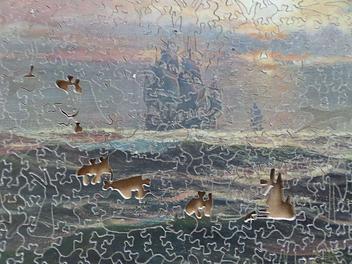


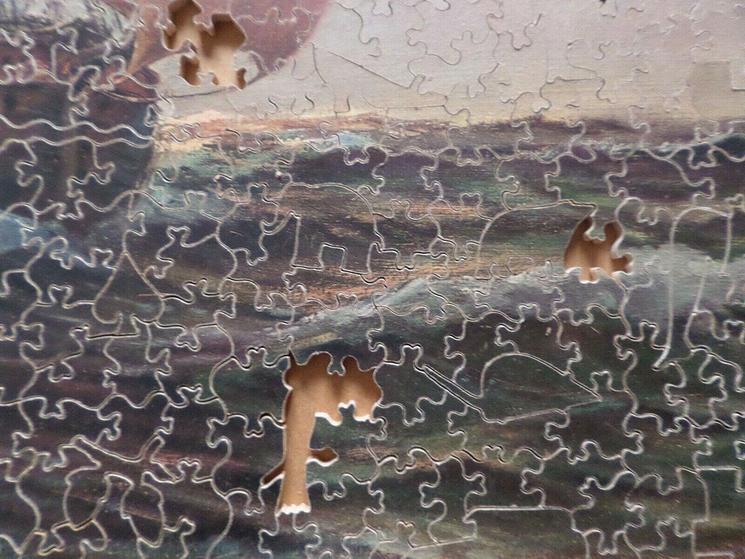
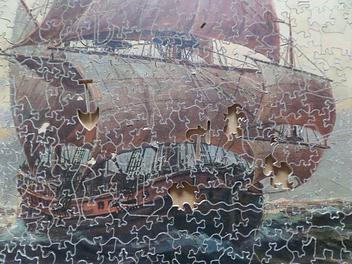


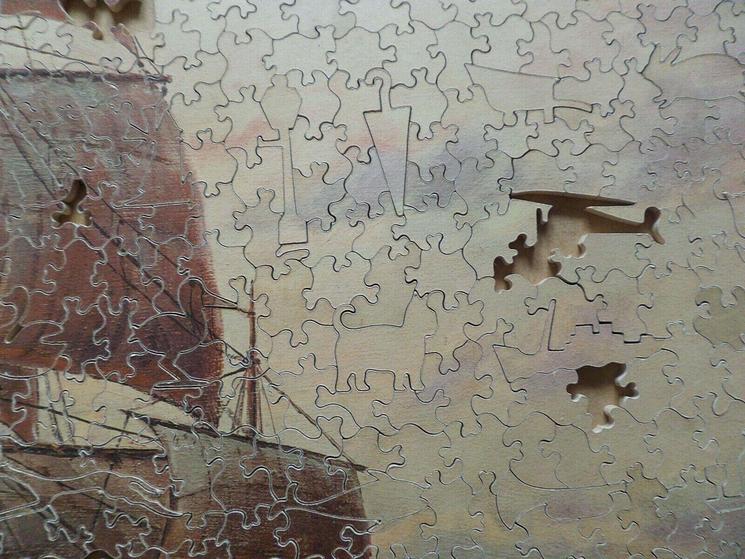
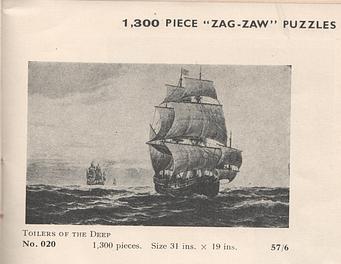
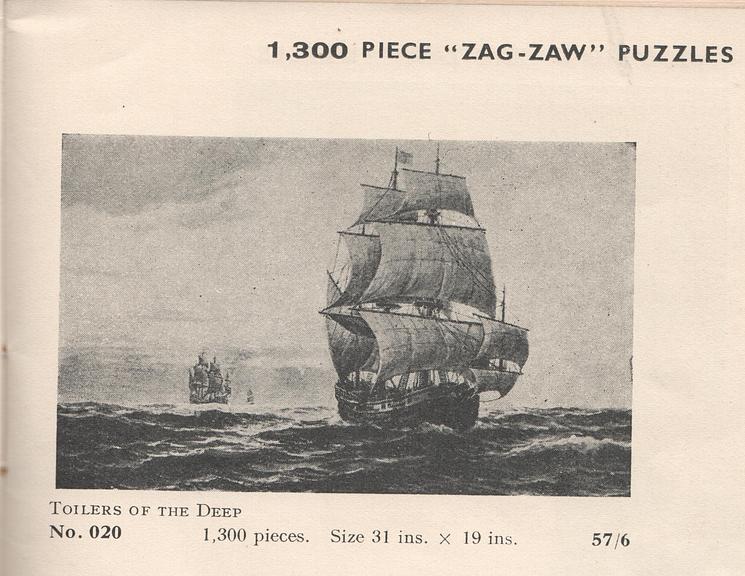
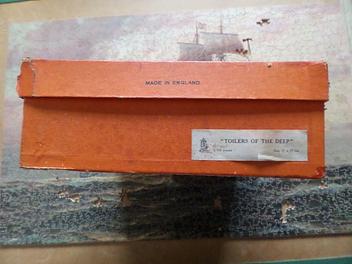
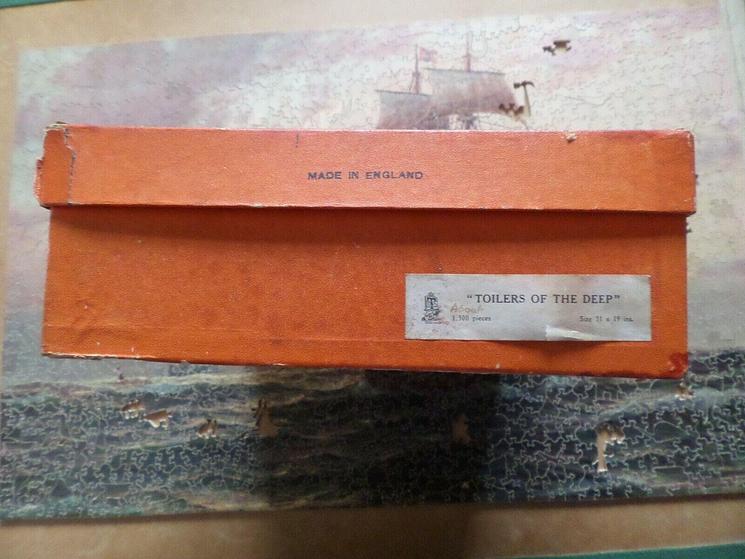


|
1300 pieces, wooden, figurals, missing around 20 pieces, with box, interlocking style, listed and described in the catalogs as number 020
|
|
|
|
Zag-Zaw line of puzzles was first produced in 1909, all incorporate figurals or whimsies, sold in red or orange boxes with labels on the side or bottom of the box, most without guide pictures. Initially cut non-interlocking but by 1930's became more so. Puzzles have a different cuts so that the same image will come in several versions which means that missing pieces can not be taken from other puzzles with the same image. See also Bob Armstrong's website on old jigsaw puzzles
|
|
|
31 x 19 inches
|
|
| ||||
| 24957 |
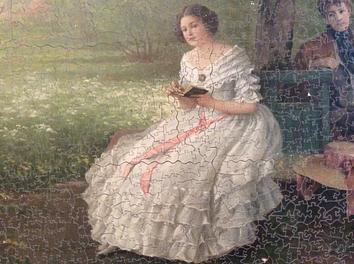

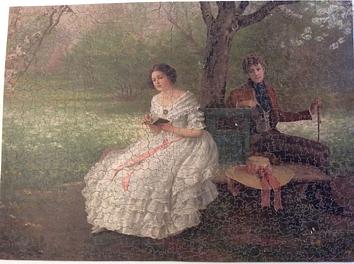

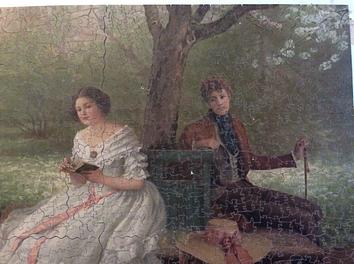
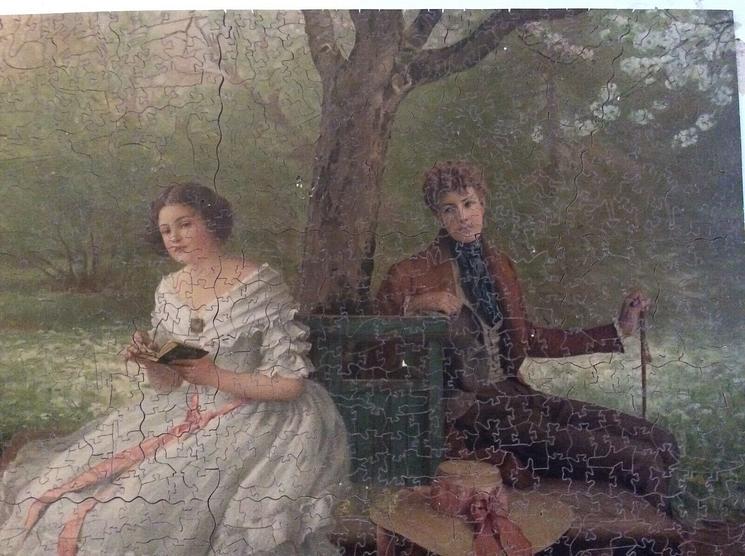

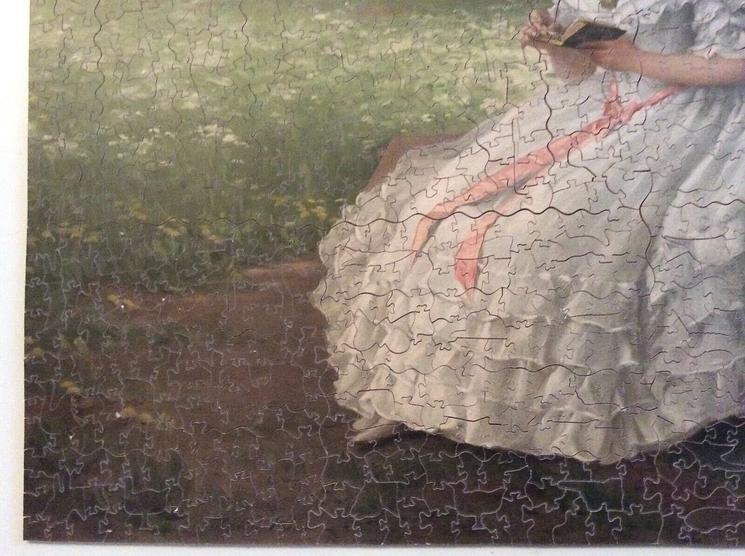

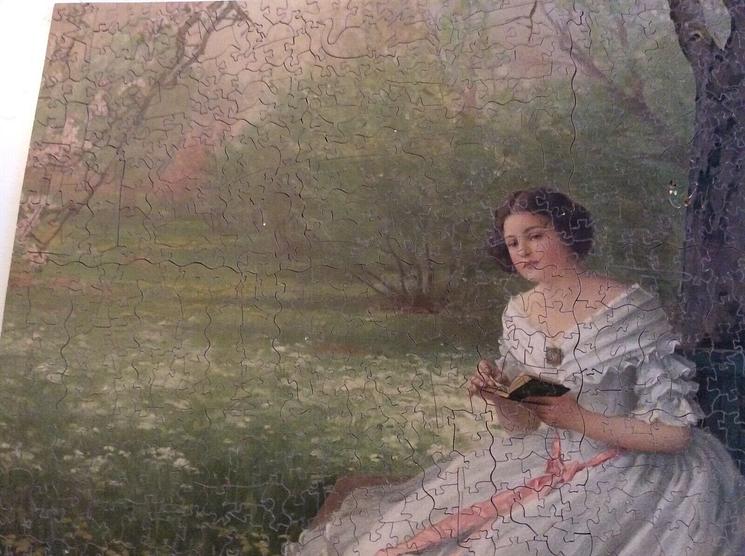


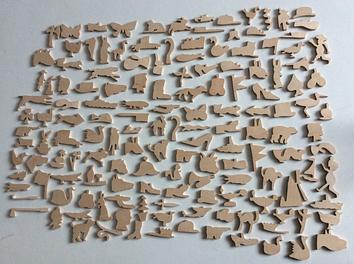
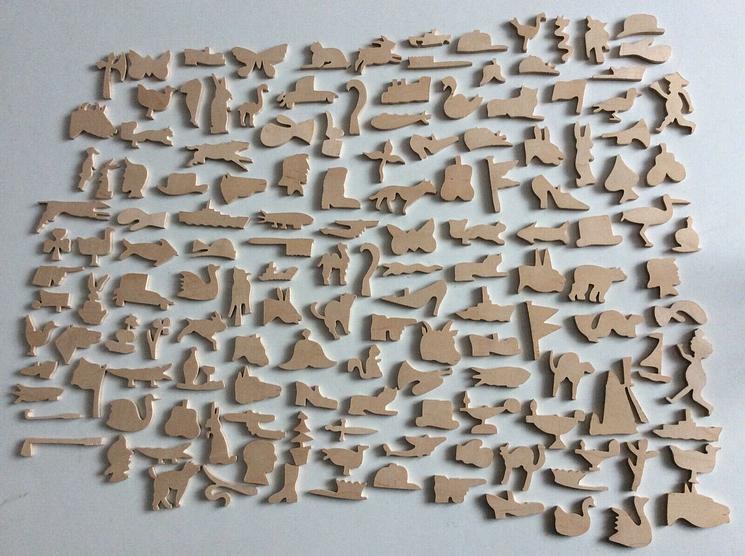


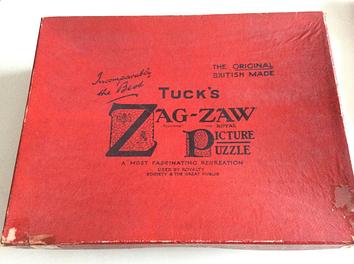
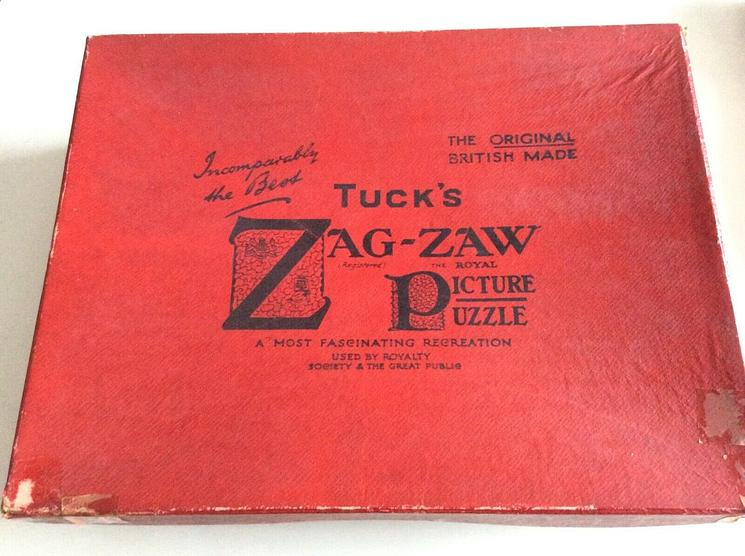
|
1550 PIECES, 150 whimsies, circa 1930
|
|
|
|
Zag-Zaw line of puzzles was first produced in 1909, all incorporate figurals or whimsies, sold in red or orange boxes with labels on the side or bottom of the box, most without guide pictures. Initially cut non-interlocking but by 1930's became more so. Puzzles have a different cuts so that the same image will come in several versions which means that missing pieces can not be taken from other puzzles with the same image. See also Bob Armstrong's website on old jigsaw puzzles
|
|
|
23 x 31 inches
|
|
|
| |||
| 24958 |
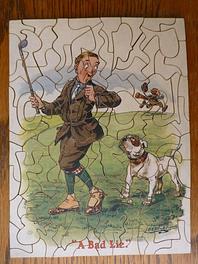
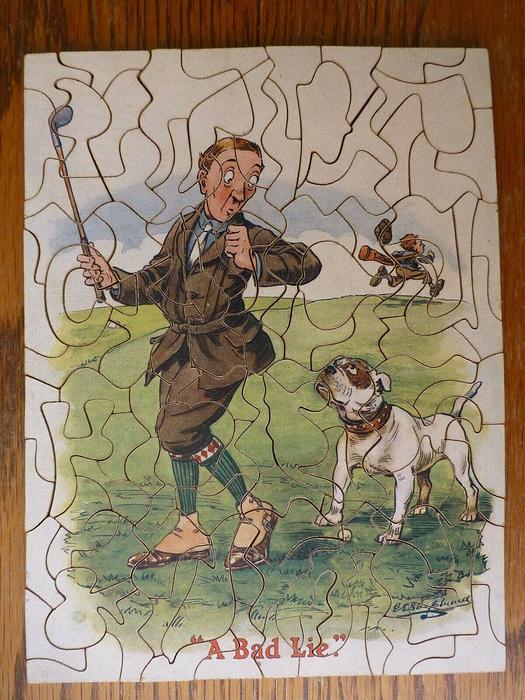


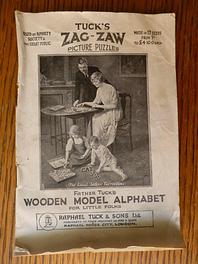
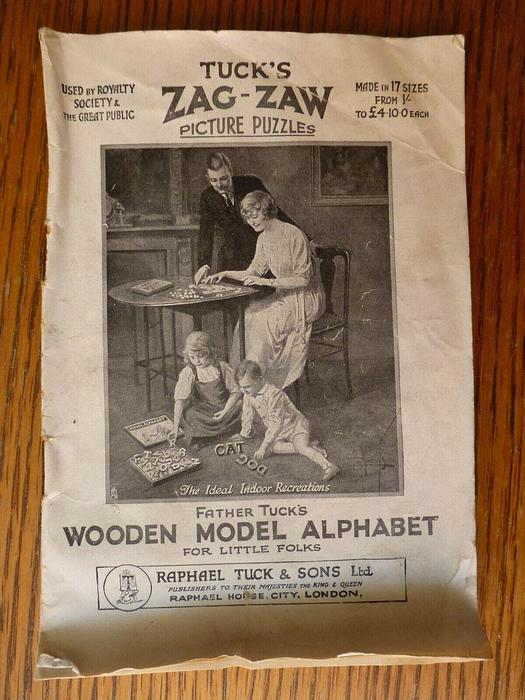

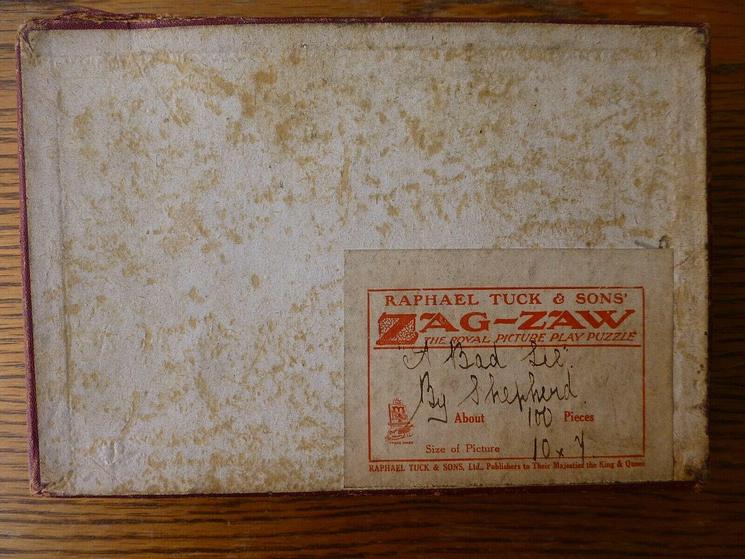

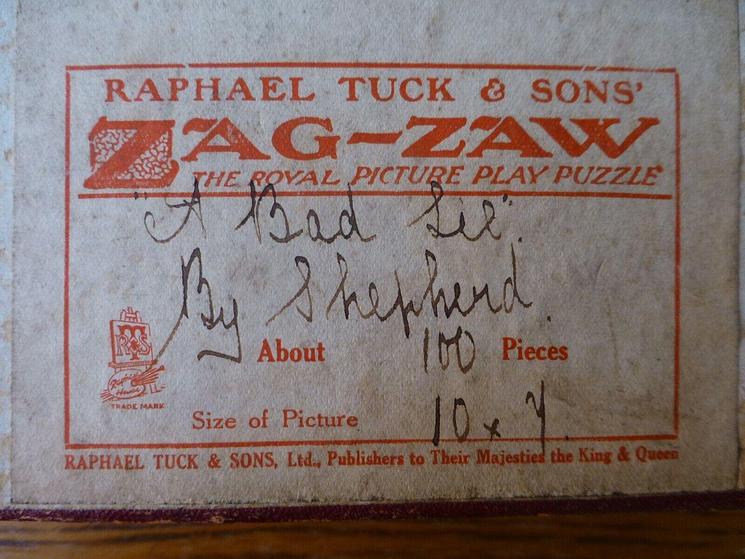
|
100 pieces, wooden, figurals, complete with box
|
|
|
|
Zag-Zaw line of puzzles was first produced in 1909, most incorporate figurals or whimsies, sold in red, orange, or occasionally green boxes with labels on the side or bottom of the box, most without guide pictures. Initially cut non-interlocking but by 1930's became more so. Puzzles have a different cuts so that the same image will come in several versions which means that missing pieces can not be taken from other puzzles with the same image. The puzzle labels are often hand written and come with minor variations in titles and details. Some have a DESIGN category on the label. From my readings this refers to the style of cut, wavy lines, figurals, etc. See also Bob Armstrong's website on old jigsaw puzzles
|
G.E. SHEPHEARD
|
|
|
|
| ||||
| 24959 |
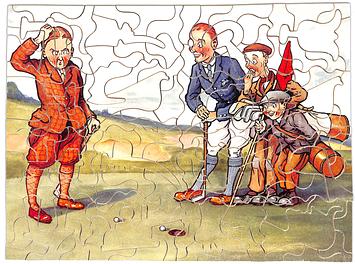

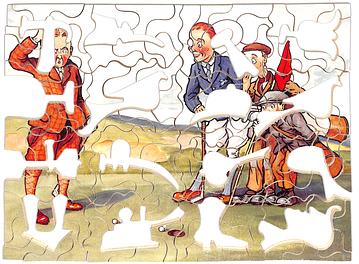










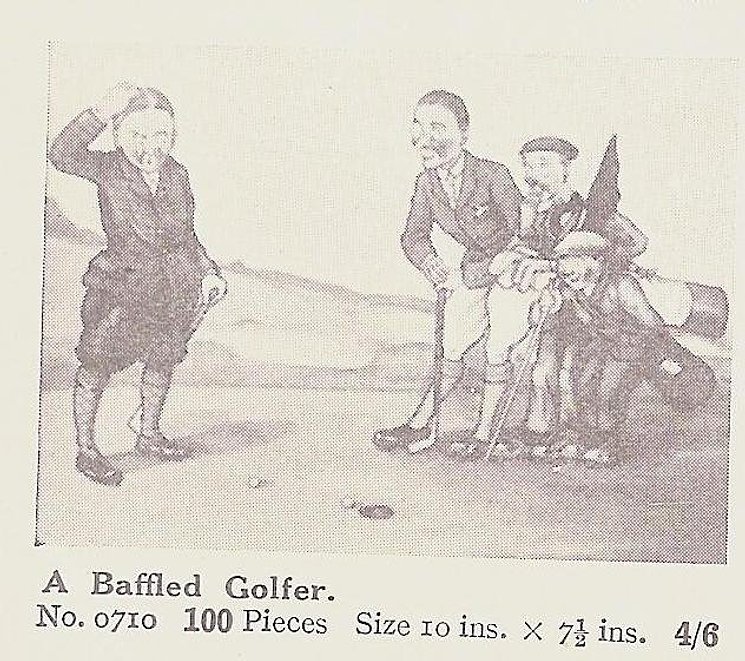
|
115 pieces, wooden, figurals, complete with box, push fit style, listed and described in the catalogs as 0710
|
|
|
|
Zag-Zaw line of puzzles was first produced in 1909, most incorporate figurals or whimsies, sold in red, orange, or occasionally green boxes with labels on the side or bottom of the box, most without guide pictures. Initially cut non-interlocking but by 1930's became more so. Puzzles have a different cuts so that the same image will come in several versions which means that missing pieces can not be taken from other puzzles with the same image. The puzzle labels are often hand written and come with minor variations in titles and details. Some have a DESIGN category on the label. From my readings this refers to the style of cut, wavy lines, figurals, etc. See also Bob Armstrong's website on old jigsaw puzzles
|
Thackeray?
|
|
10 x 7 1/2 in.
|
|
| ||||
| 24960 |


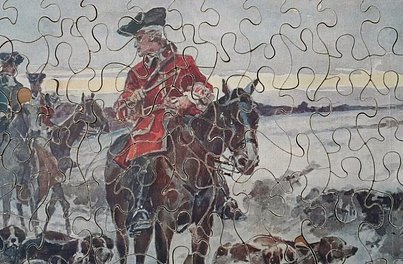
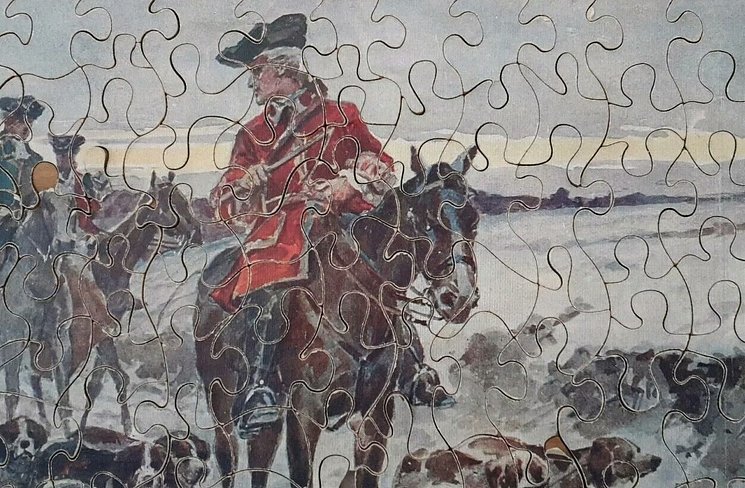
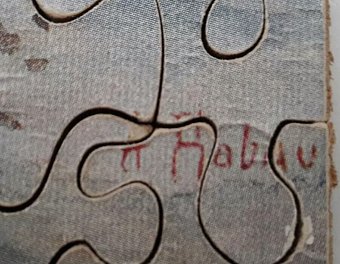


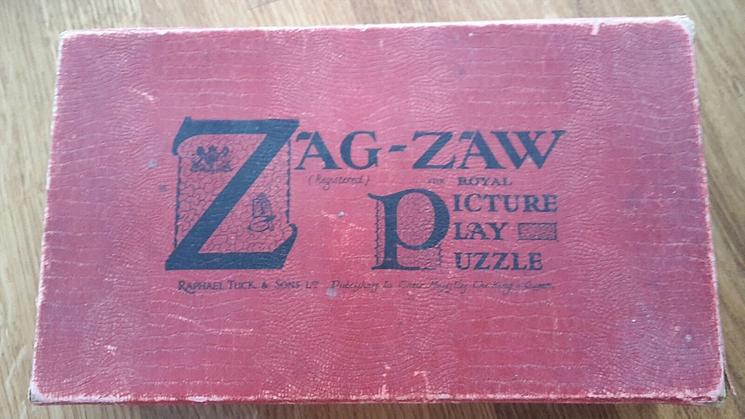
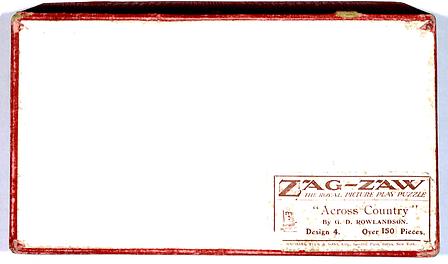

|
OVER 150 PIECES, DESIGN 4, wooden, wavy line style cut, interlocking, with box, eight broken nibs, some glued back together and some missing, box may not be correct as puzzle is signed A HABAV and not G.D. ROWLANDSON. also the style is different than Rowlandson
|
|
|
|
Zag-Zaw line of puzzles was first produced in 1909, most incorporate figurals or whimsies, sold in red, orange, or occasionally green boxes with labels on the side or bottom of the box, most without guide pictures. Initially cut non-interlocking but by 1930's became more so. Puzzles have a different cuts so that the same image will come in several versions which means that missing pieces can not be taken from other puzzles with the same image. The puzzle labels are often hand written and come with minor variations in titles and details. Some have a DESIGN category on the label. From my readings this refers to the style of cut, wavy lines, figurals, etc. See also Bob Armstrong's website on old jigsaw puzzles
|
see above note
|
|
10 3/4 x 8 in.
|
|
|